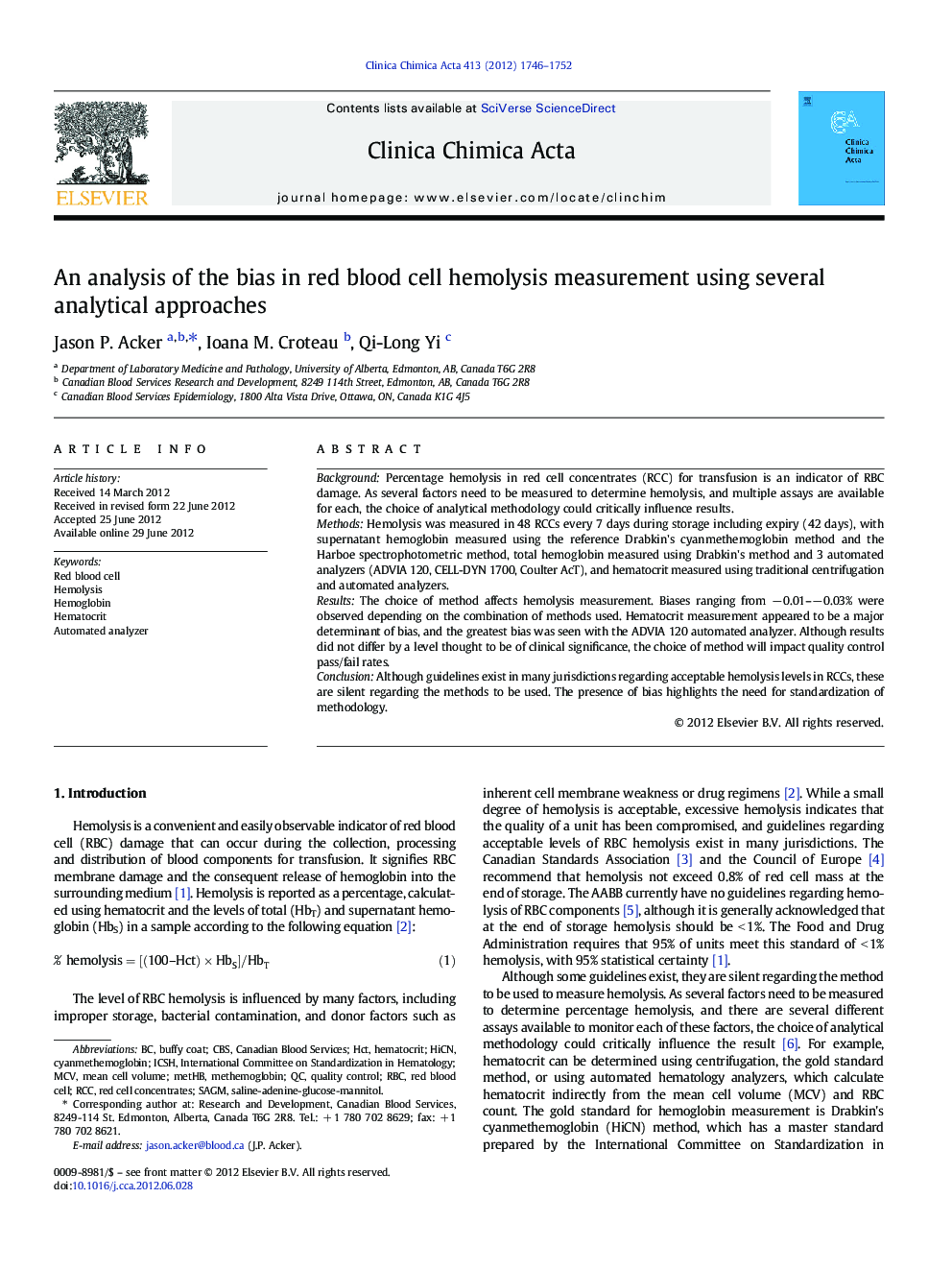| Article ID | Journal | Published Year | Pages | File Type |
|---|---|---|---|---|
| 1965555 | Clinica Chimica Acta | 2012 | 7 Pages |
BackgroundPercentage hemolysis in red cell concentrates (RCC) for transfusion is an indicator of RBC damage. As several factors need to be measured to determine hemolysis, and multiple assays are available for each, the choice of analytical methodology could critically influence results.MethodsHemolysis was measured in 48 RCCs every 7 days during storage including expiry (42 days), with supernatant hemoglobin measured using the reference Drabkin's cyanmethemoglobin method and the Harboe spectrophotometric method, total hemoglobin measured using Drabkin's method and 3 automated analyzers (ADVIA 120, CELL-DYN 1700, Coulter AcT), and hematocrit measured using traditional centrifugation and automated analyzers.ResultsThe choice of method affects hemolysis measurement. Biases ranging from − 0.01–− 0.03% were observed depending on the combination of methods used. Hematocrit measurement appeared to be a major determinant of bias, and the greatest bias was seen with the ADVIA 120 automated analyzer. Although results did not differ by a level thought to be of clinical significance, the choice of method will impact quality control pass/fail rates.ConclusionAlthough guidelines exist in many jurisdictions regarding acceptable hemolysis levels in RCCs, these are silent regarding the methods to be used. The presence of bias highlights the need for standardization of methodology.
► Percentage hemolysis in red blood cells for transfusion indicates quality. ► Multiple methods and combinations of methods were used to measure hemolysis. ► Different biases were observed, depending on the combination of methods used. ► The major determinant of bias appeared to be measurement of hematocrit. ► Although biases were small, the method could influence quality control results.
